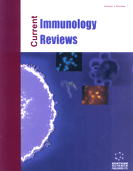Abstract
Background: Last years the development of various rapid methods for detection and identification of microorganisms is one of the most intensively growing research trends because they are available and in use in the industrial microbiological market today not only for microbiological diagnostics but for controlling food quality, pharmaceutical industry products and environmental control also. These methods tend to be nongrowth-based on various technology platforms. The more common technologies among them include nucleic-acid-based detection, which uses DNA or RNA targets; methods; enzymatic detection such as adenosine triphosphate (ATP) methods; flow-cytometry-based biochemical and various types of biosensors methods. The possibility of using the electro-optical method of analysis for the detection of microbial cells is very relevant and will be described in this paper.
Methods: We undertook a structured search of bibliographic databases for peer-reviewed research literature using a focused review question and inclusion/exclusion criteria. The quality of retrieved papers was appraised using standard tools. The characteristics of our results were descriebed and were applied to analyse the findings of included studies using a conceptual framework.
Results: In the article are described the results of the long-year research of our group devoted to developing of the real-time immunoindication (rapid detection) method basing on the registering of interactions of bacterial cells with polyclonal or phage display antibodies (the antibody-based detection) by the electro-optical analysis with the specially designed electro-optical sensor and to studying electro-optical characteristics of corresponding biological and physical processes occurring in the bacterial suspensions in the presence of various biological reagents. It was shown that the electro-optical analysis provides comparatively high sensitivity for cell detection and can be used for characterization of bacteria interactions with specific monoclonal antibodies, polyclonal antibodies or mini-antibodies. Also the theoretical fundamentals (basic principles) of the electro-optical analysis of microbial cells were described.
Conclusion: The suggested electro-optical method can be recommended for analyzing of mixed cell suspensions (detection of bacterial cells in liquid phase) by using specific antibodies with further registration of their interactions measuring changes of electro-optical parameters, but without immobilization of antibodies on the solid surface (various kinds of plates).
Keywords: Immunoindication, electro-optical analysis, electro-optical signal, electric-field orientation, Azospirillum brasilense, polyclonal antibodies, phage display technology, H-antigen, O-antigen, flagellin.
 25
25 3
3 1
1 1
1


